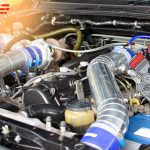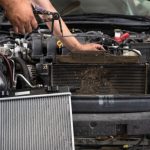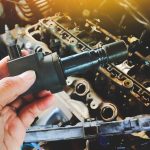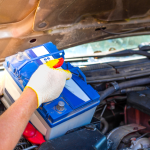Modern vehicles are marvels of engineering, combining advanced technology and mechanical precision to create reliable and efficient transportation. However, when something goes wrong under the hood, it can often feel like a puzzle that requires specialized knowledge to solve. This is where engine diagnostics comes into play. The ability to diagnose engine problems accurately is a skill that sets professional mechanics apart and is becoming increasingly valuable in the age of complex car systems. In this guide, we’ll explore what engine diagnostics is, the skills required to perform it, and the essential tools needed to be an engine whisperer.
What Is Engine Diagnostics?
At its core, engine diagnostics is the process of identifying and troubleshooting problems within a vehicle’s engine and other critical systems. This involves using various tools and techniques to gather data on how the engine is functioning, identifying abnormal behaviors, and pinpointing the root cause of a malfunction. With modern cars, diagnostics has become more sophisticated as onboard computers and sensors have become standard. These onboard diagnostics systems (OBD) monitor key components, such as fuel injection, ignition, and exhaust systems, and store data on any issues that arise.
The primary objective of engine diagnostics is to ensure that the engine operates efficiently and safely. This includes identifying problems before they become catastrophic, maintaining fuel efficiency, and ensuring that the vehicle complies with emissions standards. Proper diagnostics can save car owners time and money by preventing unnecessary repairs and by making sure the right part or system is fixed the first time.
The Skills Needed for Engine Diagnostics
Performing engine diagnostics requires a unique blend of mechanical knowledge, technical expertise, and problem-solving skills. As cars have evolved to incorporate more electronics, mechanics must have a deep understanding of both the mechanical workings of an engine and the electronic systems that support it.
One of the most critical skills in engine diagnostics is the ability to read and interpret diagnostic codes. When a car experiences a problem, the onboard diagnostics system (OBD-II in most vehicles) records error codes that correspond to specific issues. Knowing how to retrieve these codes using a diagnostic scanner and understanding what they mean is essential. Beyond the code itself, mechanics must also know how to follow up on the information and check related systems or components to confirm the problem.
Another vital skill in diagnostics is the ability to analyze data. Modern diagnostic tools provide a wealth of information about engine performance, but it’s up to the mechanic to make sense of that data. Being able to identify patterns or anomalies in engine behavior, such as changes in fuel efficiency, temperature, or RPMs, can help narrow down potential causes of an issue.
Attention to detail and patience are also important traits for those performing engine diagnostics. Diagnosing engine problems can be complex and time-consuming. A skilled mechanic must methodically test various systems and rule out potential causes before arriving at the correct diagnosis. A good diagnostic process involves asking the right questions, such as: Is the engine misfiring due to a faulty spark plug, or is there an issue with the fuel system? Is a sensor malfunctioning, or is it accurately reporting a deeper problem?
Finally, communication is key in engine diagnostics. Once the issue has been identified, mechanics need to explain the problem clearly to the vehicle owner, provide potential solutions, and recommend necessary repairs. This transparency helps build trust and ensures the customer understands what is required to get their vehicle back on the road safely.
Essential Tools for Engine Diagnostics
Having the right tools is crucial for effective engine diagnostics. With vehicles becoming more sophisticated, a mechanic’s toolbox must include both traditional mechanical tools and advanced electronic devices.
The first and most indispensable tool is the OBD-II scanner. This scanner is used to read error codes stored in the vehicle’s onboard computer system. By connecting the scanner to the vehicle’s diagnostic port, mechanics can retrieve codes that give insight into where the problem lies. These codes might indicate an issue with the engine, transmission, exhaust system, or any number of other components. An OBD-II scanner can also reset error codes once repairs are made, ensuring that the check engine light turns off after a problem is resolved.
Another essential tool is a multimeter, which is used to test electrical components and circuits in the vehicle. Since many engine problems are tied to electrical issues, a multimeter helps mechanics measure voltage, current, and resistance in different parts of the engine. This allows them to test everything from sensors and wiring to ignition systems, ensuring that the electrical components are functioning correctly.
In addition to electrical testing tools, mechanics performing engine diagnostics often rely on a compression tester. This tool is used to check the compression levels within the engine’s cylinders. Low compression in one or more cylinders can indicate issues like worn piston rings or a blown head gasket, both of which are critical problems that need to be addressed.
For fuel-related problems, a fuel pressure gauge is another key diagnostic tool. This gauge measures the pressure of fuel being delivered to the engine and helps mechanics determine if there are any issues with the fuel pump or injectors. Incorrect fuel pressure can lead to a variety of performance issues, including poor acceleration, stalling, and rough idling.
A smoke machine is also an invaluable tool for diagnosing vacuum leaks, which are often difficult to pinpoint. By introducing smoke into the intake system, mechanics can easily see where air is escaping, helping them identify the location of a leak.
Finally, modern oscilloscopes are becoming more common in advanced diagnostic work. These devices measure electrical signals over time and are especially useful for diagnosing complex issues in the ignition and fuel injection systems. Oscilloscopes provide detailed waveforms that can show how sensors, injectors, and spark plugs are performing in real-time, helping mechanics spot subtle issues that other tools might miss.
How Engine Diagnostics Has Evolved
In the past, diagnosing engine problems relied heavily on experience and manual inspection. Mechanics would listen for unusual sounds, smell for burning oil or fuel, and manually check parts for wear and tear. While these skills are still valuable, modern engine diagnostics has transformed with the rise of computer systems in cars. Today, diagnostics is much more data-driven, with vehicles themselves providing vital information through their onboard systems.
The introduction of the OBD-II system in the 1990s revolutionized diagnostics by standardizing how vehicles report errors. Before OBD-II, different manufacturers had their own proprietary diagnostic systems, making it difficult for mechanics to work on a wide range of cars. Now, the OBD-II system provides a universal interface that allows mechanics to diagnose most vehicles with ease.
As cars continue to evolve, the field of engine diagnostics will become even more reliant on technology. Mechanics will need to stay up to date with the latest diagnostic tools and techniques, as new models and engine technologies require specialized knowledge. At the same time, traditional mechanical skills will always be essential, as the best diagnostics combines cutting-edge technology with a deep understanding of how engines work.
Read More: Old Engine, New Life: How to Rebuild for Lasting Performance
The Role of Engine Diagnostics in Preventive Maintenance
One of the most important aspects of engine diagnostics is its role in preventive maintenance. Many engine problems start small but grow into more significant issues over time if left unaddressed. Regular diagnostics can catch these problems early, preventing breakdowns and expensive repairs down the road.
By regularly scanning a vehicle’s OBD-II system and monitoring engine performance data, mechanics can identify potential issues like sensor malfunctions, misfires, or declining fuel efficiency. Even if the check engine light isn’t on, regular diagnostic checks can provide valuable insights into how the engine is performing and highlight areas that might need attention in the future.
For vehicle owners, staying on top of diagnostics can extend the life of their car and ensure it runs efficiently. Preventive diagnostics help avoid unexpected breakdowns and keep repair costs lower by catching problems before they escalate.
The Future of Engine Diagnostics
As vehicles continue to become more complex, the future of engine diagnostics will likely involve even more sophisticated technology. Advances in artificial intelligence, machine learning, and data analytics are already starting to impact the automotive industry, and diagnostics is no exception. Future diagnostic tools may be able to predict issues before they happen, using real-time data to provide more accurate and proactive maintenance recommendations.
For mechanics, this means the need for ongoing education and training. As diagnostic tools and systems evolve, those working in the field will need to stay current with the latest technologies and techniques to provide the best service for their customers.
Mastering the Art of Engine Diagnostics
Becoming an expert in engine diagnostics requires a combination of hands-on experience, technical knowledge, and the right tools. Whether you’re a seasoned mechanic or an aspiring technician, mastering diagnostics is key to keeping today’s complex vehicles running smoothly. By understanding how to read diagnostic codes, analyze performance data, and use advanced tools, you can become an engine whisperer, capable of solving even the most elusive automotive issues.











